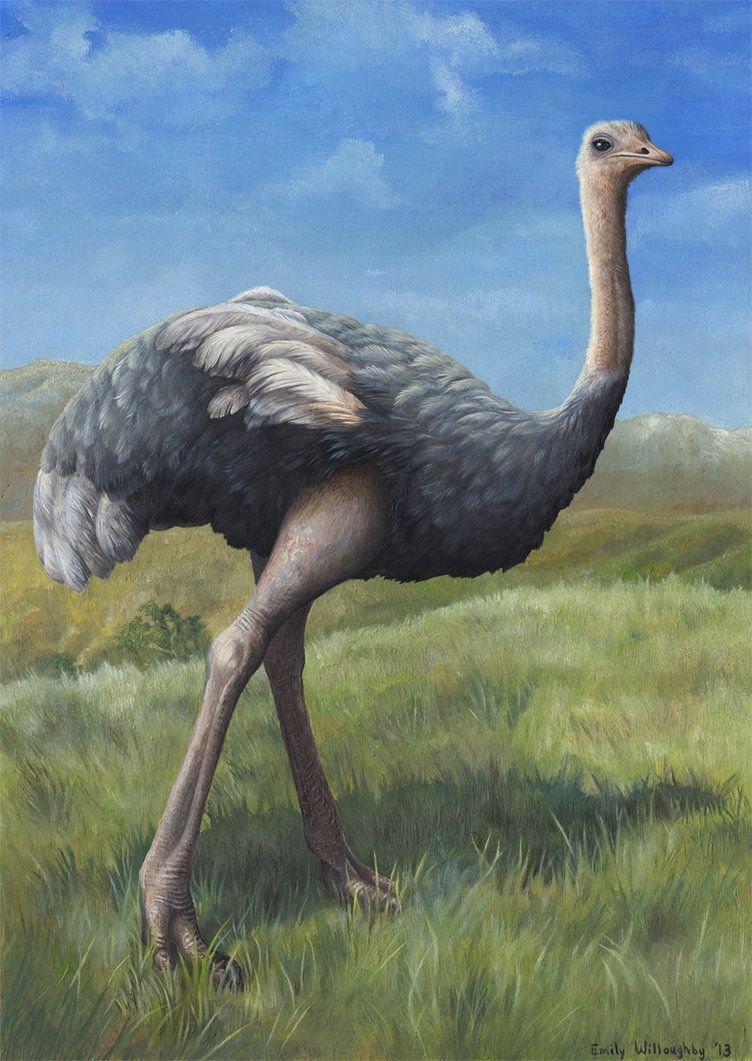Ostrich
2 HD.
Large flightless birds native to Africa and Arabia. Ostriches can form nomadic groups of 5 to 50 birds during breeding season and in drought periods, but normally spend the winter months in pairs or alone. Ostriches live in open environments of many climes, including the African savannas, the Sahel and deserts. Due to the aridity of these areas, ostriches are able to survive several days without water.
The common ostrich is around 9 feet tall and weighs up to 340 lbs. They are large enough to be ridden and may be domesticated. Ostriches may be farmed — by those with experience handling animals — or their meat, feathers and leather. Ostriches are more difficult to handle than horses, but are often used in races.
Ostriches are most active early and late in the day, when they search for vegetation to eat. Lacking teeth, they may swallow pebbles to help grind their food. The many natural predators of the ostrich — cheetahs, lions, leopards, dogs, hyenas, jackals, mongoose, large birds of prey and vultures — tend to make them skittish and wary, although domesticated ostriches may be less so.
Typically, an ostrich's strong sight and hearing, and the open terrain it inhabits, allow it to see any potential predators from a significant distance, given it time to escape. When threatened, the ostrich will either hide itself by lying flat against the ground, or run away. If cornered, it can attack with a forward kick of its powerful legs and claws. An ostrich's claws can disembowel or kill if not properly guarded against. When pursued, an ostrich can reach speeds of up to 43 mph (144 hexes per round) and can maintain a steady pace at 31mph (108 hexes per round).
Mating patterns differ by geographical region, but territorial males fight for a harem of two to seven females. Ostriches have communal, 10 foot-wide pit nests of about twenty eggs, and share the role of protecting and rearing the chicks before and after they hatch. Ostriches will viciously guard their eggs and are capable of killing lions when doing so. Their eggs are cream-colored and weigh about 3 pounds. The shell itself can hold water or be used to make jewelry, while the unfertilized egg can be eaten.
See Bestiary
